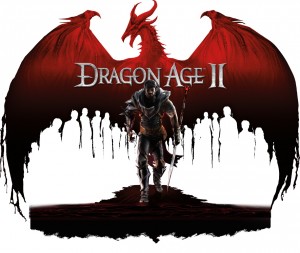 Since Dragon Age: Inquisition, the hotly anticipated third game in the series, has finally come out, I figured it was about time for me to play the second game in the series, the dully named but pretty fun Dragon Age 2, which has been gathering cyberdust on my hard drive for literally years while I work my way excruciatingly slowly through my Steam library which, like the universe itself, is ever expanding far beyond any human’s ability to keep pace with it. (If you want to be friends, my Steam Account Name is robotghostvampire and my birthday is March 16!)
Since Dragon Age: Inquisition, the hotly anticipated third game in the series, has finally come out, I figured it was about time for me to play the second game in the series, the dully named but pretty fun Dragon Age 2, which has been gathering cyberdust on my hard drive for literally years while I work my way excruciatingly slowly through my Steam library which, like the universe itself, is ever expanding far beyond any human’s ability to keep pace with it. (If you want to be friends, my Steam Account Name is robotghostvampire and my birthday is March 16!)
So I was discussing my ongoing playthrough with a friend who had played it years ago when it actually came out – mostly about how much I wanted to smooch on the awkward elf lady – and I said something to the effect of “Then Garrett was all like…” And my friend interrupted, “Who the hell is Garrett?”
“Garrett Hawke, the main character!”
“Oh,” my friend said. “You mean Marian. I played her as a woman.”
Of course. In Dragon Age 2, as in many other contemporary games such as the Mass Effect series and even The Sims, the main character as whom you play is almost completely dependent on your decisions, as the player, for their identity. In the Dragon Age wiki, Hawke is described as follows:
Hawke is the player-controlled protagonist of Dragon Age II. Hawke is fully voiced, can be either male or female and has a fully customizable appearance. Hawke can be a mage, warrior or rogue. The default given name for Hawke is Garrett for a male, and Marian for a female.
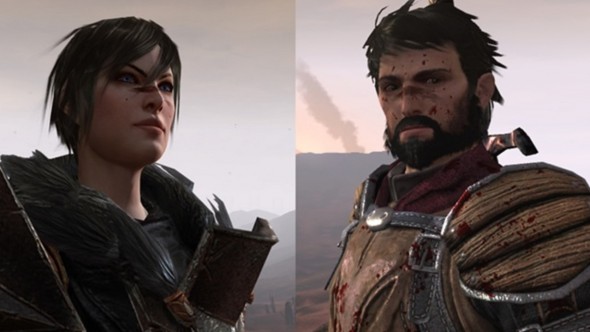
Marian, meet Garrett. Garrett, Marian. I think you’ll find you have a lot in common.
While limited customization has been a part of videogames for a long time (You could always name Link whatever you wanted to name him, for example – and if you name him ZELDA you get to start the game in Hero Mode!), the ability to customize characters to the extent that’s possible today is in part a reaction to the obvious lack of diversity in videogame characters for the few decades that videogames have been a thing. Gamers are people of every race, gender, sexuality, physical and mental configuration and capacity – as are game creators, for that matter – but it’s not hard to understand why game characters haven’t typically been as diverse as audiences, from a marketing perspective. If the presumption is that the largest segment of your potential market consists of young white men, then in games where the character’s identity is usually limited to their appearance and maybe how high they can jump or which gun is their favourite, it only makes financial sense for the character with whom we’re meant to identify to be similar to the kinds of people who are statistically most likely to be interested in gaming.
That said, it’s a poor sort of imagination that can’t identify with a character just because the character looks different than they do. Non-young, non-white, and non-male gamers have managed perfectly well to identify with the characters presented to them over the decades, and I doubt that anyone found themselves alienated like the audience at a Brecht play when Samus Aran removed her(!) helmet at the end of Metroid in 1986.
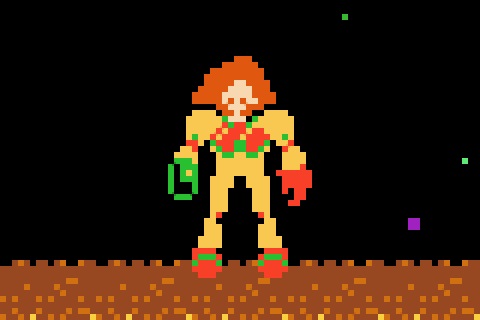
It’s a g-g-g-girl!
But the stereotype (and marketing problem) that only boys play games is less true than ever now, and that could be at least in part due to the increasing ability for character customization in games. It’s been more than a decade since The Sims started making people notice that women gamers were a significant proportion of the market. Now, of course, it’s also important that the gameplay of The Sims is a lot different than that of, say, Call of Duty – the kinds of things you can do in The Sims are much broader and that’s obviously going to appeal to a broader category of player. But character customization is what The Sims is all about, and so people who did happen to feel alienated or uncomfortable being compelled to identify with the same kind of protagonist over and over again could certainly find a sense of liberation from the ability to create and play with characters who were precisely as similar or different to the player as the player wanted them to be.
But what makes for a better gaming experience? Being able to identify closely with the character you control because that character is similar to the physical version of you in meatspace? Or expanding the sphere of your empathy by being compelled to identify with somebody who is different than you in some important ways?
What struck me most when I had that confusion with my friend about whether Hawke was a man or a woman was the realization that, even though we had been playing the same game, our experiences identifying with this character whose choices we controlled were much different – much more personal – than our experiences playing games where our characters were already created for us. The existence of Wes Anderson and Tyler Perry, or, say, Clint Eastwood and Norah Ephron, speaks to the very real differences in the kinds of media that appeal to different segments of the population – but that’s much more than just a matter of what the characters look like, it’s a matter of those characters’ actual experience within their own particular cultural context. While it’s been shown that reading novels in general makes you a better person by expanding your capacity for empathy as you’re compelled to identify with people who are not necessarily like you, non-fiction works such as Black Like Me and Self-Made Man are explicitly about trying to understand the experiences of people unlike the author (and presumably unlike the reader), and indie games like Depression Quest (about the experience of living with clinical depression) and Dys4ia (about the experience of being transgender and undergoing hormone replacement therapy) are beginning to take that artistic power into the gamersphere too and use the medium’s unique abilities to this effect; as Anna Anthropy, the designer of Dys4ia, points out, “A video game lets you set up goals for the player and make her fail to achieve them. A reader can’t fail a book. It’s an entirely different level of empathy.”
Games make that kind of experimentation with empathy easier than ever now. I have female friends who always choose to play as male characters in videogames when the choice is presented to them, and male friends who always choose to be females. Not because they have any kind of gender dysphoria, not necessarily for any reason at all besides aesthetic preference. Others choose to play as a different gender than their own in order to change how other people treat them: women who play as male characters in online games to cut down on the amount of harassment they get from other players, and men who play as female characters because apparently that is a good way to encourage other players to give you free stuff for no reason. Sometimes men play as women because plenty of games you’ll just be staring at your character’s butt a lot and they’d rather look at Marion’s butt than at Garrett’s. Although evidently people’s behaviour in games tends to stay the same regardless of their character’s chosen gender more often than not.
Those are some of the artistic and social functions that videogames can enable – but back to the marketing perspective: what makes for a better brand? Mario and Luigi, Link, Cloud Strife, Solid Snake, and so on, have become iconic characters representing and embodying their respective franchises. All of these characters are recognizable and beloved enough that they can sell games just be being featured in them. The same isn’t true of the Dragon Age, or the Sims series of games, both immensely popular but not because of broad player identification with its characters – each installment of the Dragon Age series has you playing a different character. Even if you recreate your character precisely from the previous one, the game is not designed as narratively sequential from the character’s point of view (although game data can be imported from earlier games and somewhat affects the state of the gameworld for later games, and there are certain secondary characters who recur across multiple games in the series).
It’s the game’s world that is the draw in games like these, rather than the game’s characters – while in contrast, you can put Mario into almost any world you like and any kind of game (in addition to a plumber, he’s been a doctor, a golfer, a go-cart racer, a super smash guy, etc.) and we keep coming back because it’s Mario. We know him, identify with and have affection for him in a way that transcends his particular gameplay mechanics, environment, or circumstances of employment. Samus from Metroid and Chell from Portal are both women, just like Marion Hawke and “Femshep” (the female version of Mass Effect’s Commander Shephard) but you can’t mass market the latter two – you can’t turn them into action figures and breakfast cereals – because their gender, appearance, and biography is different for every single person who takes on their personas. You don’t name the series after them, because the collective gaming experience of their audience is shared through important storyworld elements rather than the identity of the protagonist. Which is why you have Super Mario Bros (the main characters), but Dragon Age (the time period during which the events of the series occur) and Mass Effect (the scientific principle that allows for faster-than-light travel); as the wiki notes, “Some characters may or may not appear in Mass Effect 2 or Mass Effect 3, depending on their fate in the previous games. Some of the characters only appear if the player has installed the relevant downloadable content.” Not exactly a can’t-miss branding opportunity. The fact that Link, the hero of the Legend of Zelda series, has often been mistakenly thought to be named Zelda, also speaks to the danger of referring to a game or series by the proper name of a character other than the protagonist.
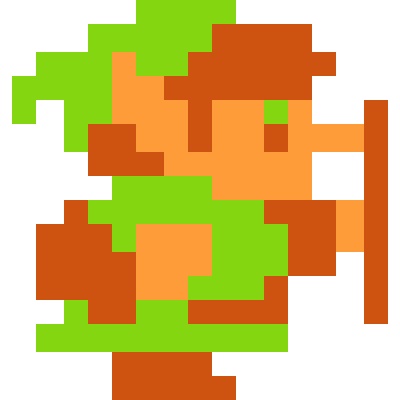
He’s so masculine, though!
But then we have those characters who are not only not customizable to better resemble the player, but who are not even recognizably human at all. An anthropomorphic animal like Sonic the Hedgehog, a gender-ambiguous cephalothorax like Kirby, or a super-abstract geometry creature like Pac-Man. According to the line of thought that identification is easier with characters who actually resemble us, these game protagonists ought to alienate players, right? And yet of course that’s not what happens, and Sonic, Kirby, and Pac-Man are actually some of the most well-known, most popular, and most iconic videogame characters of all time.
Iconic being the operative word here. As these things always do, it comes back to Scott McCloud’s Understanding Comics. McCloud describes a continuum of visual representation, where at one extreme is photorealism and at the other is iconic abstraction, where the resemblance to a human is as minimal as possible while still triggering our brain’s facial recognition module. Star Trek’s holodeck would be the closest possible technology to a fully photorealistic videogame, visually indistinguishable from reality. The characters from the Dragon Age series are the next step toward abstraction, being realistically proportioned and so on but still clearly not actually real. Mario is right in the middle of the spectrum between realism and abstraction – he’s obviously human, but his features and proportions are exaggerated to a degree that we don’t expect him to move or behave naturalistically, and it seems congruent to have him in a world of pastel-colours and walking mushrooms. Next is Kirby, who has arms and legs like a person does, eyes and a mouth like a person has, but is otherwise more like an amoeba made of cotton candy. And finally there’s our old friend Pac-Man, at the far end of abstraction, a yellow circle with a triangle cut out of it; he doesn’t even have eyes, but because he sort of resembles a head with its mouth open, we can still believably empathize with him as some kind of sentient being with desires and beliefs – a person, more or less.

So it seems, ironically, that the advances in graphics capabilities over the last thirty-five years or so may have complicated the player’s capacity for empathy with the characters that we play in games – while Pac-Man’s appearance is a result of the technological limitations that existed when he was being created, it’s only as we get closer and closer to the possibility of photorealism that customizability has become more and more standard, and even expected, in order to furnish the player with a more highly satisfying gaming experience. Gaming is usually a solitary experience in that we mostly sit by ourselves to play a game, the same way we sit by ourselves to read a book – in contrast to sitting in a movie theatre watching a film with a bunch of other people; despite the vastly increased proportion of people who do experience movies alone on Netflix or whatever, feature films are still to a large extent designed for large-scale exhibition to dozens or hundreds of people simultaneously.
But while the solitary experience of reading a book is mitigated by the ability to share it with other people (since everyone more or less experiences the same events in a book in the same order and context), the solitary experience of gaming increasingly loses the sense of being a shared experience the more choice is presented to the player; when you can choose not only whether you traverse none, some, or all of the optional side-quests, when you can choose whether or not to romance one or more of the other characters, when a vital character might die halfway through for me but live to the end for you, when even the name, race, gender, appearance, sexuality, specializations and abilities are certain to be different for every player who takes on this protean persona, a game risks exchanging an increased sense of empathy for a draining-out of the sense of community that comes from having the very same aesthetic and narrative experience as countless other experiencers out there in the world.
I’m not sure that’s a game design problem, exactly…but it’s a design decision that’s important to consider and to keep in mind, whether you’re making a game or just playing one: what does this game force me to be? About what or who does this game compel me to care? Just how far can you abstract empathy? If Hawke can be whoever you want, who actually is Hawke?
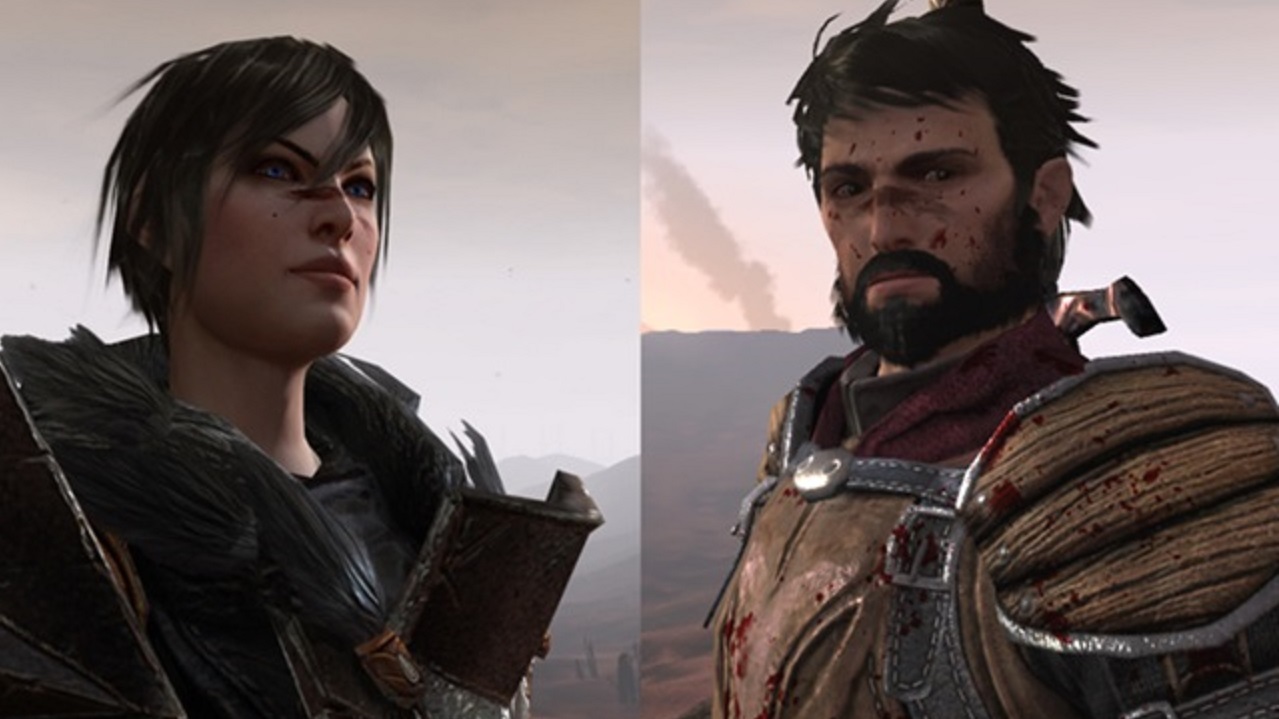
You raise some interesting points.
The BioWare game sense of ownership has been fascinating to see. Most people I interact with mention ‘their’ Shepherd or ‘their’ Hawke. We all have essentially the same story in the same world, but the amount of choice we’re given adds investment to the story even if the faces and voices sometimes aren’t the most impressive. It’s also what leads to things like the furor over the ending of ME3.
I remember reading about Halo and the concept that “you” are Master Chief and that’s why we never see his face. That way you could imagine yourself inside the armour. “You” in this instance, are still always a man with a gravelly voice called John.
I’m pleased you mention Understanding Comics as the attitude that anything with even a vague face can be relatable is why we still love Kirby, Pac-Man and the rest of those guys.
I think the customisation reframes the sense of identification to one of ownership, but it’s totally possible to identify with a well-written character whether it’s Lara Croft, Sonic or the snake from Snake.
It’s interesting to note that in my experience the most popular games in non-“gamer” populations are puzzle games and other abstract titles (Bejewelled, Tetris, Angry Birds, etc.) This suggests to me that identification in the literary sense may be the wrong way to look at games — while players do identify with their in-game avatars to the extent of saying “I died” or “I beat the boss”, it’s not like Mario or Pac-Man have a relatable human personality that draws people in.
True, I think that’s one of the aspects which appeals with Mario, Pac-Man and the like. Their personality is minimal enough that we can read a lot into them, rather than a predetermined ‘character’ created by a studio.
With Mario, it really depends on the game. There’s a lot of talk about the strange relationship which demands Princess Peach be kidnapped either to add excitement into their relationship or because Mario has yet to realise Bowser and Peach are an item. All because the same plot mechanism tends to get used.
In addition, the gameplay can dictate personality. The New Super Mario Bros series created a class system in my household. Player one was Mario and the person you didn’t mess with, it wasn’t New Super Toad Bros, after all. Player one would tend to move first, get dibs on the power ups. Player two was Luigi, second only to Mario and resentful of him. Players three and four were the pair of unnamed Toads. They were lesser citizens, not even given names. Because of the nature of the game, they would get shoved off blocks and people would steal their power-ups.